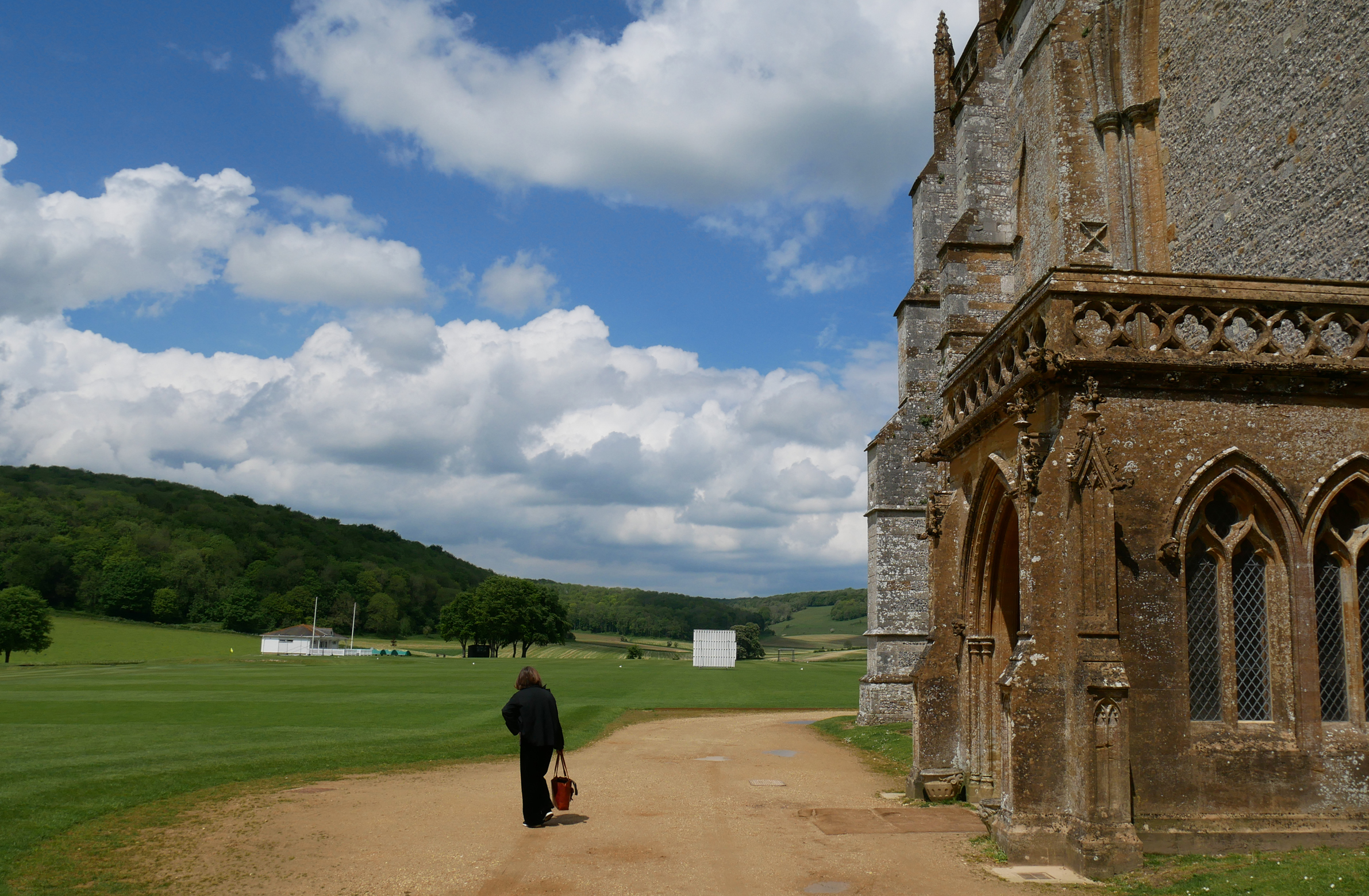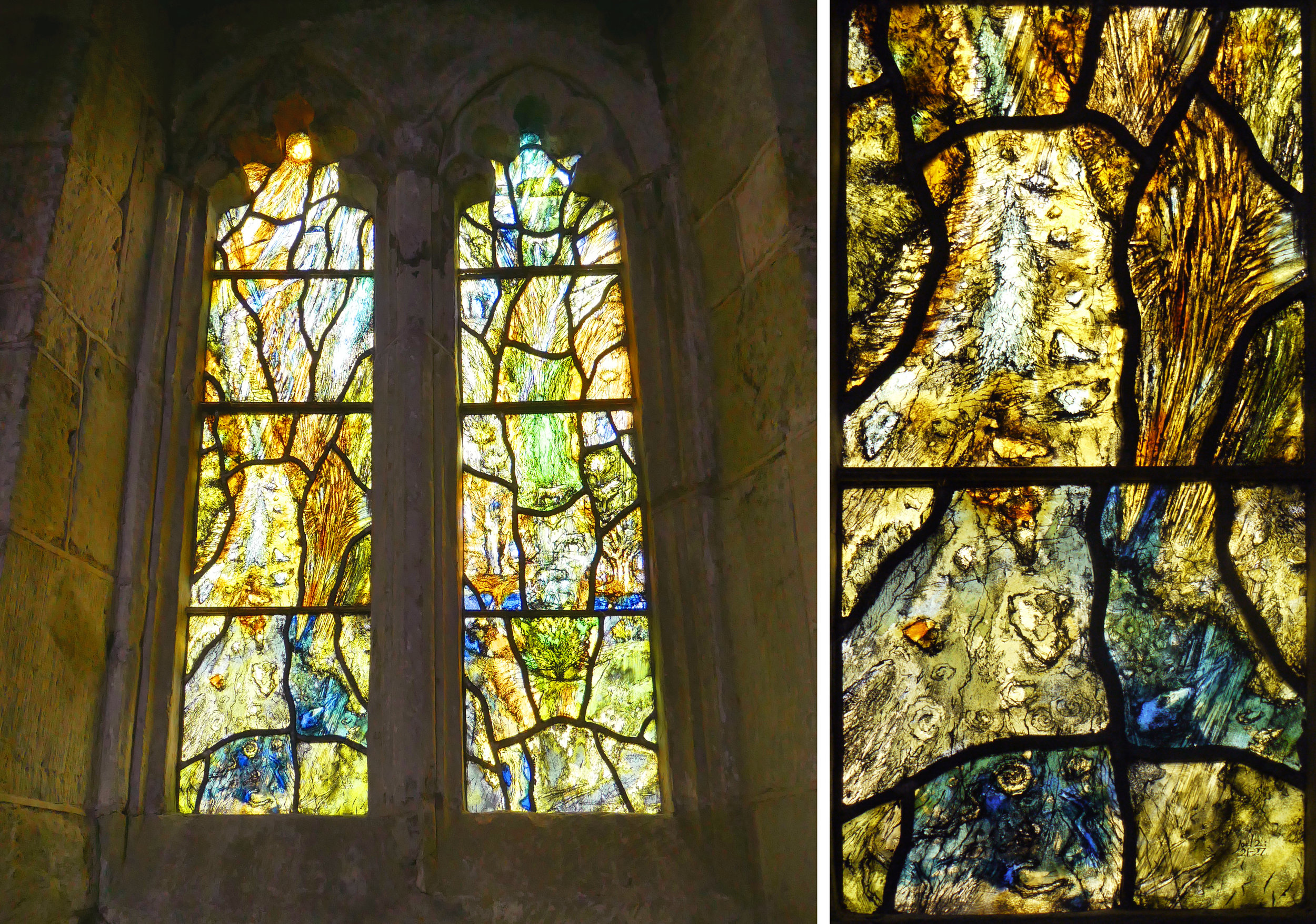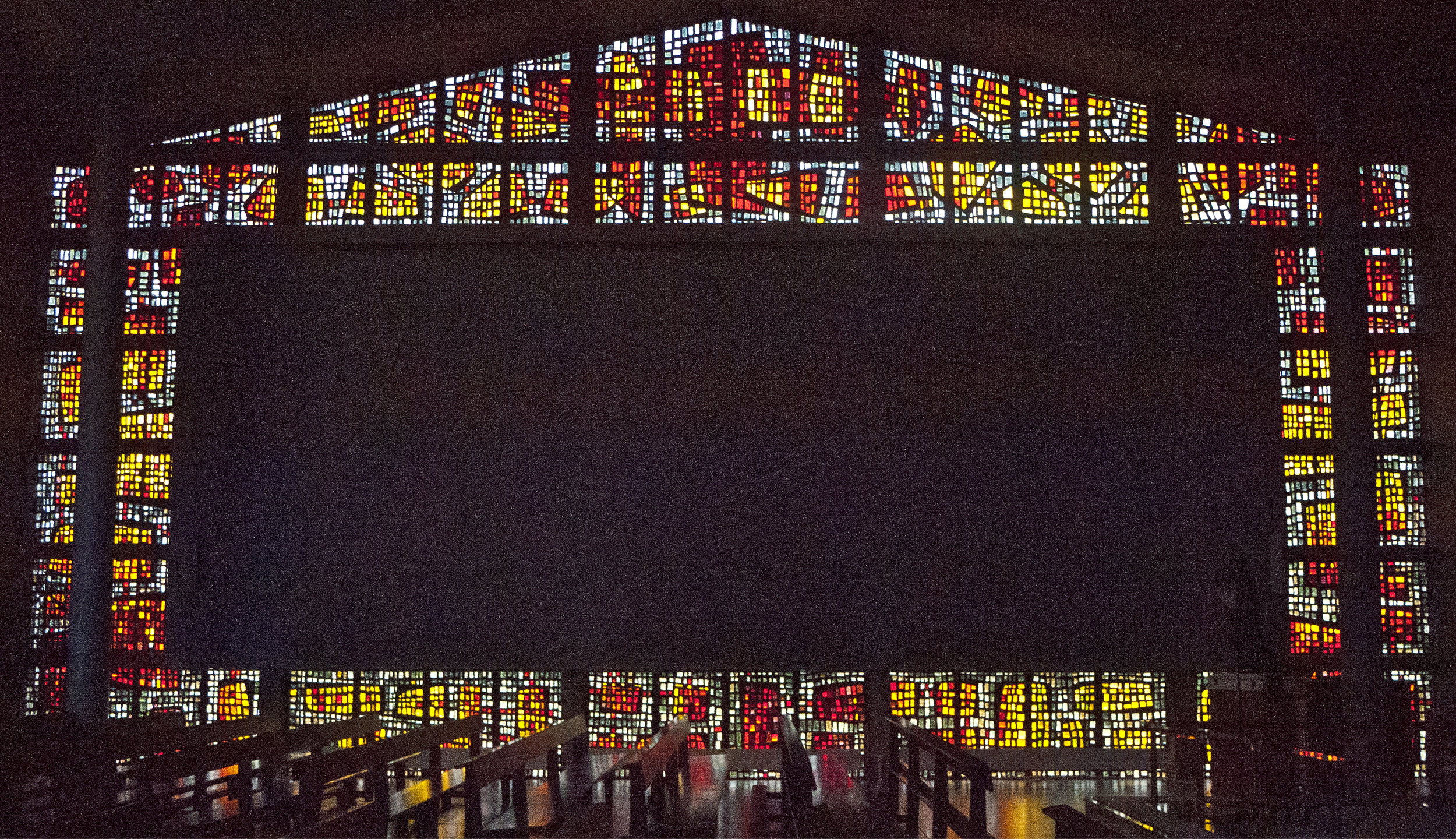The picture above shows the lawn outside my studio after an episode of sun burn. I’ve done it before when leaving mirrors outside to dry after cleaning them. This time it was a load of dalle de verre - slabs of thick glass that concentrated the sun’s midsummer rays on to the grass before I had time to pick them up and polish them. Lots of people think it’s an art form.
The pattern has been there for three weeks and I have been looking at it in combination with the crazy paving cobbles of the adjacent terrace, which I know well as I made a glass panel in 2007 that faithfully copied the contours of the stones. I loved making this, switching my brain off while I copied rather than invented a pattern, but as you may know I am always suspicious that the work won’t be any good if I’m enjoying myself too much.
I was disappointed in the panel when I got it out to look at again, apart from the success of the colour combination which resulted in a thin yellow outline to each stone (see detail below - can’t remember how I did that!) and the delicate scalpel cutting in neat facets rather than curves.
Yate Library 2009: detail from glass panel and sample in my studio window.
I have continued with this garden/cobbled theme in lots of commissioned work ever since. Above is a detail and a sample of one of four panels for Yate Library that I made in 2009. Here the random shapes are derived from the stones on the wall of an ancient barn with an anemone cutting across the sandblasted lines.
Things got more complicated a couple of years later when I had a commission for a health facility in Dorchester (see details below). Here the plants are marigolds drawn in a schematic way under the cobbles and in a graphic style on top of them. The patterns in this design came from chicken wire (obviously) and a marbled endpaper for the green lines.
Maiden Castle Road, Dorchester: details from two glass panels.
Although I really like both of those commissions, they weren’t in my head this month as I drew out a new commission for a building in Thornbury, South Gloucestershire (see design below). Here I disguised some flowers and leaves amongst the cobbles in the manner of an oriental carpet. I’ve concluded that a design of cobbles alone is just too boring. It doesn’t provide the links with nature that is a traditional part of ornamentation for architecture, so here branches cut across the cobbles with flower heads that are pale blue and shaped like clouds.
Design for glass panels for Alexandra Court, Thornbury July 2019.





























